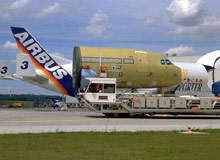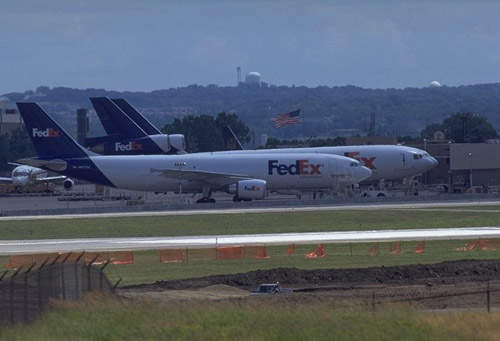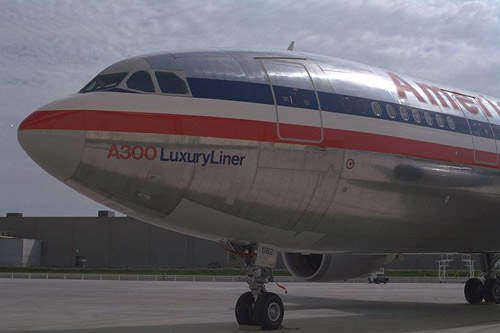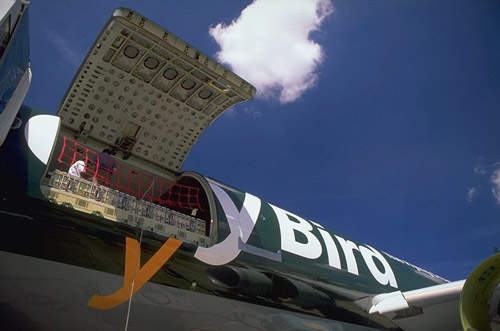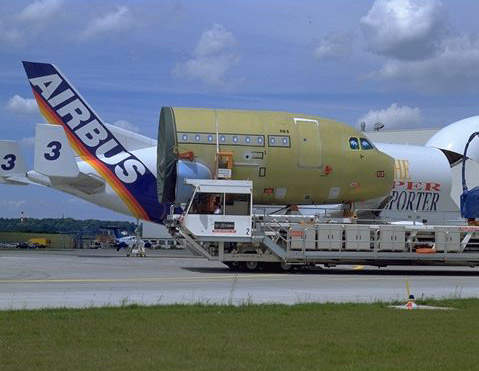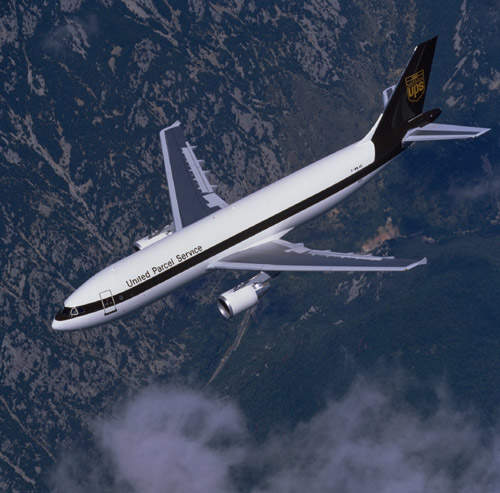The Airbus Industrie A300-600 is a large-capacity, wide-bodied medium- and long-range airliner. The aircraft is an advanced development of the original A300 B2/B4 series of aircraft first built in the 1970s and entered service in 1984. The current production A300-600R entered service in 1988. 561 A300 aircraft have been delivered and 410 are in service. The freighter version, the A300-600F, was delivered to Federal Express, the launch customer in 1994. Federal Express has a fleet of 60 A300-600F aircraft.
In March 2006, Airbus announced that production of A300 and A310 aircraft would be discontinued. The last aircraft, an A300-600F freighter, was delivered to FedEx Express in July 2007.
Airbus Industrie is a consortium formed by EADS and BAE Systems. EADS, the European Aeronautic Defence and Space company, was formed by a merger of Aerospatiale-Matra of France, Daimler-Chrysler Aerospace of Germany and CASA of Spain (former members of Airbus).
In October 2006, BAE Systems completed the sale of its shareholding to EADS, which is now the sole owner of Airbus.
A key design feature is the exceptionally wide 5.64m (222in) diameter cross-section of the fuselage. The large cross-section gives passenger comfort and flexibility in cabin layout from six abreast to nine abreast seating. The A300-600 carries industry standard LD3 containers side by side in its holds.
The A300-600 provides reduced operating cost per seat, giving airlines a low risk and economically efficient introduction into the wide-body airliner market. The A300-600 is also built in a freighter version and an all-passenger or all-cargo convertible version.
A new A300-600F General Freighter variant has a loading system and sliding doors for handling large items of freight. The launch customer is Air Hong Kong, with an order for eight aircraft. The first was delivered in 2004.
The flight deck and the nose of the aircraft are manufactured by EADS France (formerly Aerospatiale Matra). EADS Germany (formerly DaimlerChrysler Aerospace Airbus), EADS Spain (formerly CASA), BAE SYSTEMS and Fokker manufacture large equipped sections of the aircraft, which are transported by a Beluga aircraft to the EADS France manufacturing facility at Toulouse for assembly. The assembled aircraft are flown to Hamburg for completion of the outfitting and then returned to Toulouse for final checking and for customer acceptance tests.
FLIGHT DECK
The flight deck accommodates a crew of two and there are also two observers’ seats. The cockpit is fitted with liquid crystal displays and six cathode ray tube displays. The pilots’ communications systems include HF and VHF communications, a selective calling system for use in a densely saturated communications environment, an interphone and passenger address system, a ground crew calling system and a cockpit voice recorder.
The front deck windscreens are fitted with an electrical heating anti-ice system and the deck side windows have an electrical demisting system.
AVIONICS AND FLIGHT SYSTEMS
The aircraft’s radio navigation suite includes an automatic direction finder, two VHF omnidirectional radio rangers, two instrument landing systems, two distance measuring equipment, marker beacon receivers and two radio altimeters. The aircraft is also equipped with a traffic alert and collision avoidance system and a ground proximity warning system.
The avionics suite includes two digital air data computers supplied by Honeywell, a digital automatic flight control system with dedicated dual flight control computers for the flight director and autopilot.
An ARINC 717 data recorder is fitted with a digital flight data acquisition and recorder.
ENGINES
The aircraft has two turbofan engines mounted in underwing pods. The A300-600 engines are the Pratt & Whitney PW 4000, or the General Electric GE CF6-80C2A1 rated at 56,000lb to 61,500lb.
The integrated wing tanks have a capacity of 62,000l of fuel. An additional fuel tank in the tail plane brings the total fuel capacity to 68,150l, and optional fuel cells in the cargo area can maximise the total fuel to 73,000l.
LANDING GEAR
The A300-600 has hydraulically controlled retractable tricycle-type landing gear designed by Messier-Bugatti. The main landing gear units retract inward into the fuselage and the nose unit retracts forward. The mainwheels are fitted with skid-protected hydraulic disc brakes. A standby braking system is powered by a separate set of hydraulics.
FUSELAGE
The main cabin is configured in a twin-aisle layout with a six to nine abreast seating arrangement. There are six main cabin passenger doors, with two outward parallel opening, plug type passenger doors on each side of the aircraft forward of the wing and one on each side at the rear of the fuselage.
A Honeywell auxiliary power unit, type 331-250F is installed in the tailcone with an integrated fire protection system. The APU provides bleed air to the pneumatic system, for the main engine start and for the aircraft’s air conditioning system. The APU also drives an auxiliary generator for ground operations and in flight power.
Airbus A300-600 FREIGHTER
The freighter version, the A300-600F has a reinforced cabin floor and the aircraft can carry a maximum payload of 54,750kg and the range with the maximum payload is 4,850km. A large cargo door has been installed on the main cabin port side. Federal Express and CityBird of Belgium were the first two customers for the A300-600 Freighter aircraft.

